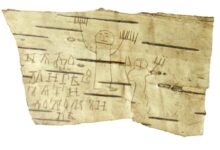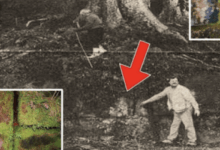This 2200 Year Old Scroll Proves Jesus Is God
Unveiling Prophecy: Do the Dead Sea Scrolls Foreshadow Jesus?
Imagine holding a 2,200-year-old manuscript—an ancient text that may contain prophetic references to Jesus, written long before his birth. This isn’t fiction. It’s the extraordinary claim surrounding certain Dead Sea Scrolls discovered near Qumran, close to the Dead Sea. These Jewish texts, hidden before the time of Christ, have sparked intense debate among scholars, theologians, and archaeologists.
Could writings from centuries before Jesus truly predict his coming? Over 900 manuscripts were recovered from 11 caves, dating from the 3rd century BCE to the 1st century CE. Roughly 40% are copies of Hebrew Bible books, predating previous versions by almost a thousand years. The rest consist of non-canonical religious writings and sectarian documents reflecting the beliefs of a Jewish apocalyptic group—likely the Essenes.
A Climate of Messianic Expectation
The scrolls were written during a time of messianic anticipation. Some texts refer to not one, but two messiahs: one priestly, one royal. The “War Scroll” describes an end-time battle led by a Davidic prince—evoking imagery similar to Jesus in Revelation. The Damascus Document mentions an “interpreter of the law” and “prince of the whole congregation,” echoing New Testament titles for Jesus.
The Great Isaiah Scroll, dating to 125 BCE, contains Isaiah 53’s “suffering servant,” “pierced for our transgressions”—a passage Christians associate with the crucifixion. Isaiah 9 and 61 speak of a divine child and bringer of good news, paralleling Gospel portrayals of Jesus.
Melchizedek and the ‘Son of God’
The Melchizedek Scroll (11Q13) presents a heavenly figure who delivers atonement and divine judgment—described in terms normally reserved for God. Hebrews later connects Jesus to Melchizedek, reflecting earlier Jewish thought.
Another remarkable fragment, 4Q246—the “Son of God” text—describes a figure called “Son of the Most High,” directly echoing the angel Gabriel’s words in Luke’s Gospel. Since this text predates Christianity, it raises key questions: Did Christian writers adopt preexisting ideas, or were these divine foreshadowings?
Scientific Validation
New carbon-14 dating confirms that key messianic texts were written before Jesus’s time, ruling out Christian fabrication. DNA analysis of parchment has helped scholars reassemble related fragments, including commentaries on Isaiah 53—offering new insights into how ancient Jews interpreted prophetic passages.
Scholarly Debate
Opinions differ. Some scholars, like Lawrence Schiffman, acknowledge that many messianic ideas in the scrolls align more with Christianity than previously thought. Others, like John Collins, caution against imposing Christian interpretation on Jewish texts. Jewish scholars argue that concepts such as divine sonship and atonement were present in Judaism but understood differently.
The Gabriel Stone
Adding to the intrigue is the Gabriel Stone, a 1st-century BCE tablet inscribed with a prophecy from the angel Gabriel. A debated line appears to command a slain messiah to rise after three days—eerily similar to the resurrection story. Though not found in a controlled excavation, experts believe it originated from the same region as the scrolls, linking it to similar beliefs.
Conclusion
The Dead Sea Scrolls, along with the Gabriel Stone, show that beliefs in a divine messiah, suffering savior, and resurrection existed in Judaism before Christianity. Whether these texts predict Jesus or simply reflect the shared religious language of the time, they provide profound context for understanding how early Christians interpreted Jesus’s life and mission.




